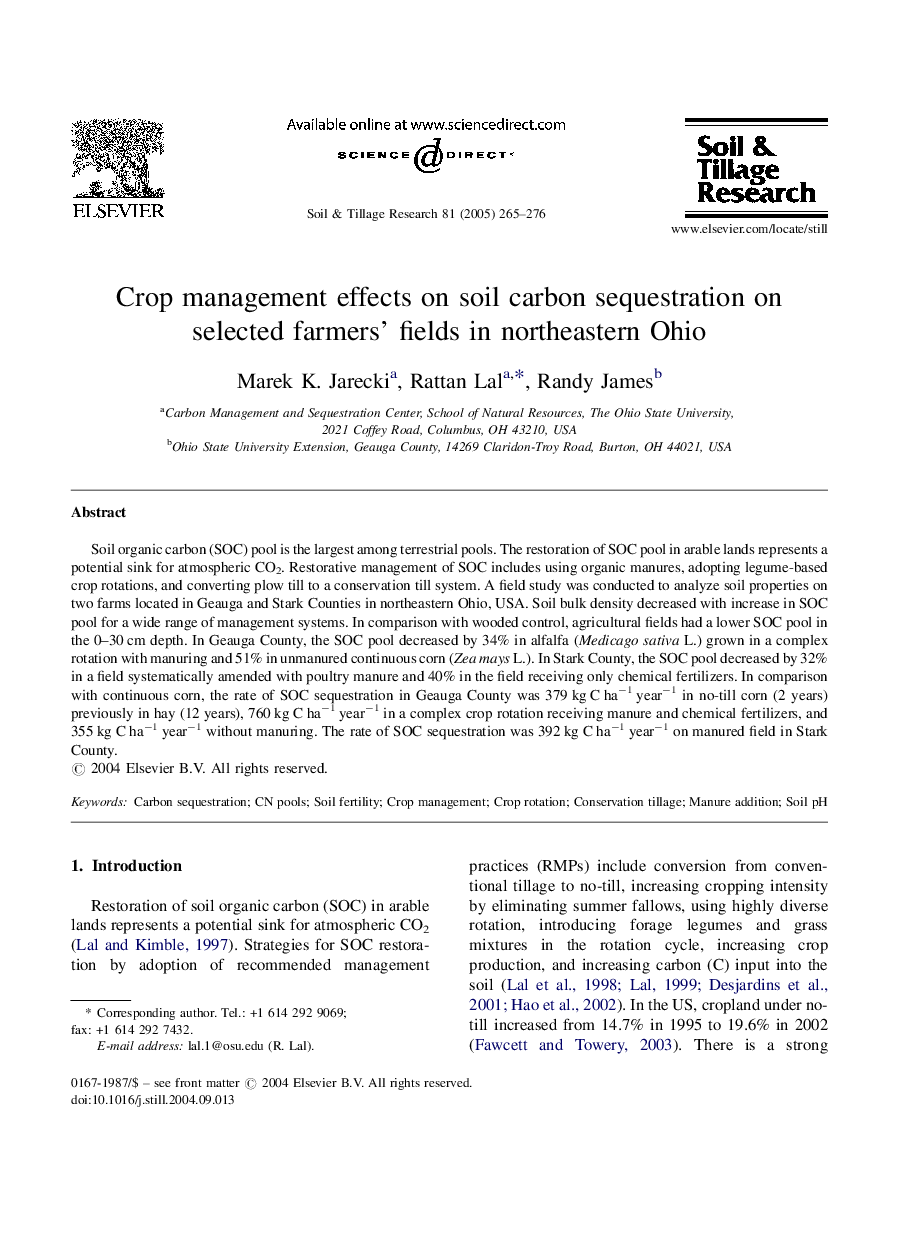| Article ID | Journal | Published Year | Pages | File Type |
|---|---|---|---|---|
| 10295468 | Soil and Tillage Research | 2005 | 12 Pages |
Abstract
Soil organic carbon (SOC) pool is the largest among terrestrial pools. The restoration of SOC pool in arable lands represents a potential sink for atmospheric CO2. Restorative management of SOC includes using organic manures, adopting legume-based crop rotations, and converting plow till to a conservation till system. A field study was conducted to analyze soil properties on two farms located in Geauga and Stark Counties in northeastern Ohio, USA. Soil bulk density decreased with increase in SOC pool for a wide range of management systems. In comparison with wooded control, agricultural fields had a lower SOC pool in the 0-30 cm depth. In Geauga County, the SOC pool decreased by 34% in alfalfa (Medicago sativa L.) grown in a complex rotation with manuring and 51% in unmanured continuous corn (Zea mays L.). In Stark County, the SOC pool decreased by 32% in a field systematically amended with poultry manure and 40% in the field receiving only chemical fertilizers. In comparison with continuous corn, the rate of SOC sequestration in Geauga County was 379 kg C haâ1 yearâ1 in no-till corn (2 years) previously in hay (12 years), 760 kg C haâ1 yearâ1 in a complex crop rotation receiving manure and chemical fertilizers, and 355 kg C haâ1 yearâ1 without manuring. The rate of SOC sequestration was 392 kg C haâ1 yearâ1 on manured field in Stark County.
Related Topics
Physical Sciences and Engineering
Energy
Renewable Energy, Sustainability and the Environment
Authors
Marek K. Jarecki, Rattan Lal, Randy James,
